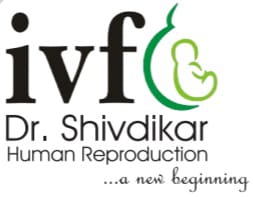+918048035722

This is your website preview.
Currently it only shows your basic business info. Start adding relevant business details such as description, images and products or services to gain your customers attention by using Boost 360 android app / iOS App / web portal.
Description
Ovulation Induction (OI) & Monitoring Ovulation Induction (OI) is a fertility treatment that uses medications to stimulate the ovaries to produce and release eggs, increasing the chances of conception. This is often used for women who have irregular ovulation or do not ovulate at all, such as those with Polycystic Ovary Syndrome (PCOS) or other hormonal imbalances. Who Needs Ovulation Induction? OI is recommended for women who have: ✅ Irregular or absent ovulation (e.g., PCOS, hypothalamic dysfunction) ✅ Unexplained infertility (as part of timed intercourse or IUI cycles) ✅ Mild endometriosis with ovulatory dysfunction ✅ Low ovarian reserve (in some cases, to enhance egg production) Common Medications for Ovulation Induction 1️⃣ Oral Medications (First-Line Treatment) Clomiphene Citrate (Clomid, Serophene) Blocks estrogen receptors to increase FSH production. Taken on days 3–7 or 5–9 of the menstrual cycle. 80% of women ovulate; pregnancy rates: 10–15% per cycle. Side effects: Hot flashes, mood swings, thin uterine lining. Letrozole (Femara) An aromatase inhibitor that lowers estrogen and increases FSH. Preferred for PCOS due to higher pregnancy success rates. Fewer side effects than Clomid. 2️⃣ Injectable Gonadotropins (FSH, hMG) Used for women who do not respond to oral medications. Directly stimulates the ovaries to produce multiple eggs. Higher success rates but increased risk of multiple pregnancy & OHSS. 3️⃣ hCG Trigger Shot (Ovidrel, Pregnyl) Given when follicles reach 18–22mm in size. Triggers ovulation 36–40 hours later. Used in timed intercourse, IUI, or IVF cycles. Ovulation Monitoring Process 📍 1. Baseline Ultrasound & Bloodwork (Day 2-3) Checks for cysts and baseline hormone levels (FSH, LH, estradiol). 📍 2. Follicle Tracking Ultrasounds (Days 7-14) Monitors follicle growth (ideal size: 18–22mm). Checks uterine lining thickness (>7mm is ideal for implantation). 📍 3. Hormone Blood Tests Estrogen (E2): Increases as follicles mature. LH Surge: Indicates ovulation is about to occur. 📍 4. Ovulation Confirmation Ultrasound shows collapsed follicle. Progesterone blood test (Day 21): Confirms ovulation. Success Rates of Ovulation Induction Clomid/Letrozole + Timed Intercourse: 10–20% per cycle. Clomid/Letrozole + IUI: 15–25% per cycle. Gonadotropins + IUI: 20–30% per cycle. Risks & Considerations ❌ Multiple Pregnancy – Higher with gonadotropins (15–25%). ❌ Ovarian Hyperstimulation Syndrome (OHSS) – Over-response to medication can cause bloating & discomfort. ❌ Thin Uterine Lining – More common with Clomid. Would you like guidance on selecting the right medication, lifestyle tips for ovulation, or anything else? 😊

